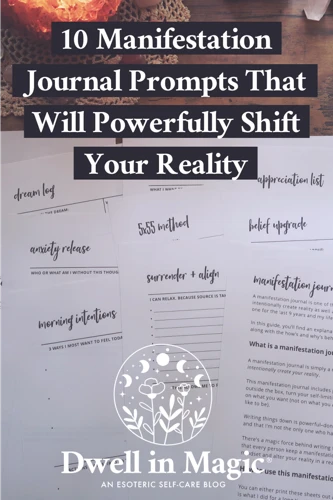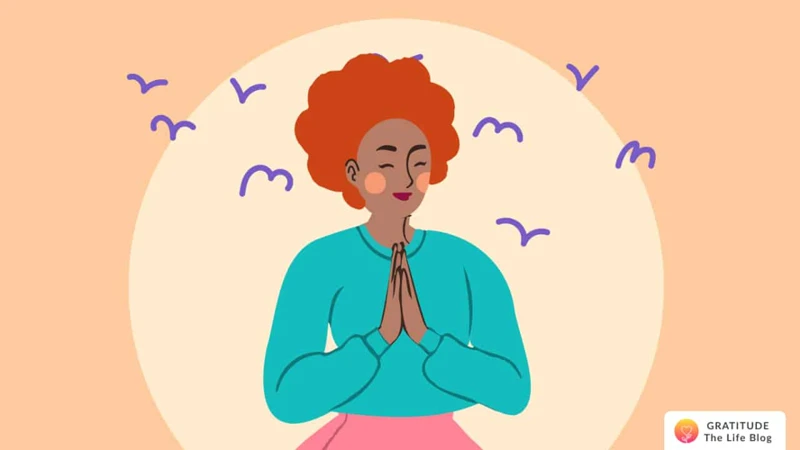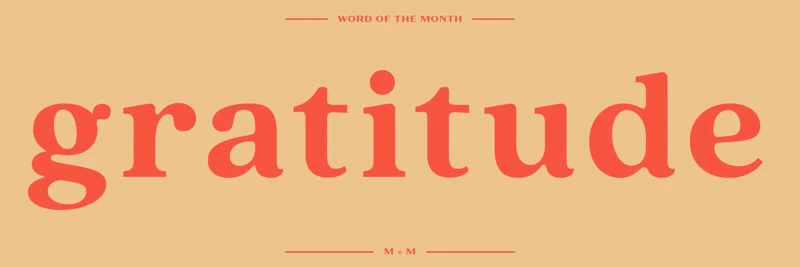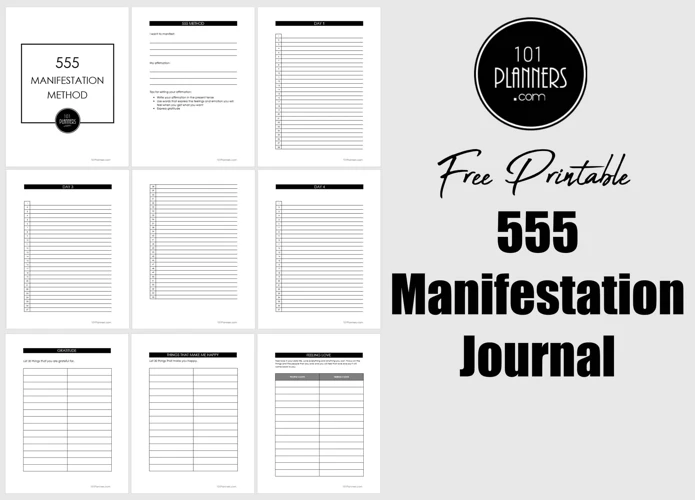Have you ever felt like you’re stuck in a rut, unable to move forward and attract abundance in your life? It can be frustrating and overwhelming to feel like you’re not making progress. But what if the solution to your problem is as simple as gratitude? Yes, you heard it right, expressing gratitude can work wonders in manifesting abundance. In this article, we’ll explore 5 powerful gratitude exercises that can help you tap into the abundance that surrounds you. So, let’s dive in and discover how you can manifest abundance with these simple gratitude practices.
Exercise 1: Gratitude Journaling

As I sat down with pen and paper in hand, ready to begin my gratitude journaling practice, a wave of perplexity washed over me. Where do I start? What should I write? The answer is simple: write anything and everything that you are grateful for. Let your thoughts flow freely onto the page, without judgement or expectation. In this exercise, we will explore the power of gratitude journaling and how it can transform our mindset for the better. Get ready to strengthen your gratitude muscle and manifest abundance in your life.
How to do it:
One effective gratitude exercise is Gratitude Journaling. It involves writing down things that you are grateful for every day. Here is how to do it:
| Step 1: | Choose a time of day to sit down and reflect. Many people prefer to do it in the morning to set a positive tone for the day, while others prefer to do it at night to reflect on their day. |
| Step 2: | Find a notebook or a journal that you can dedicate to this exercise. |
| Step 3: | Write down three to five things that you are grateful for. They can be simple things, such as a good night’s sleep or a delicious meal, or more complex things, such as the support of loved ones or the opportunity to pursue a passion. |
| Step 4: | Take a moment to reflect on each item on your list and consider why it brings you gratitude. |
| Step 5: | Write down any other thoughts or feelings that arise from your gratitude practice. |
| Step 6: | Repeat this exercise every day, ideally at the same time and in the same place. |
Why it works: Gratitude journaling helps to shift your focus from negative thoughts and feelings towards positive ones. By actively seeking out things to be grateful for, you are training your brain to look for the good in your life. This can improve your overall outlook, reduce stress, and increase feelings of happiness and well-being.
Why it works:
Gratitude exercises are not just about recognizing what you already have but about cultivating a positive and grateful mindset that can improve your overall well-being. Here’s why each of these exercises can be a powerful way to manifest abundance:
| Exercise | Why it works |
|---|---|
| Gratitude Journaling | Writing down the things you are grateful for helps to train your brain to focus on the positive. By taking time every day to reflect on the good things in your life, you are strengthening the neural pathways associated with gratitude, which makes it easier to feel positive emotions in the future. |
| Gratitude Walk | Taking a walk in nature while focusing on the things you are grateful for can help reduce stress and anxiety, increase mindfulness, and improve overall well-being. Getting outside and moving your body also releases endorphins, which can help boost your mood and energy levels. |
| Gratitude Meditation | Practicing gratitude meditation involves focusing your attention on things you are grateful for, which can help cultivate a positive mindset, reduce stress and anxiety, and increase overall feelings of happiness and well-being. By taking time to consciously focus on the good things in your life, you can train your brain to be more positive and optimistic. |
| Gratitude Jar | The Gratitude Jar exercise involves keeping a jar or container where you can write down and store all the things you are grateful for. This exercise is particularly powerful because it allows you to physically see all the good things in your life, which can help reinforce a positive mindset and trigger feelings of joy and gratitude. |
| Gratitude Letter | Writing a letter of gratitude to someone you appreciate can help cultivate a sense of connection and positivity in your relationships. The act of expressing gratitude has been shown to improve overall well-being and increase feelings of happiness and contentment. By taking time to express your gratitude to someone in your life, you can strengthen your relationship and cultivate a more positive outlook on life. |
By incorporating one or more of these gratitude exercises into your daily routine, you can manifest abundance and improve your overall sense of well-being. These exercises don’t require a lot of time or effort, but the benefits can be significant – they can help you shift your focus from what you lack to what you have and cultivate a more positive, grateful mindset that can improve your relationships, health, and happiness.
Exercise 2: Gratitude Walk

Taking a moment to step outside and appreciate the world around us can often do wonders for our wellbeing. The Gratitude Walk, a simple yet powerful exercise, encourages us to do just that, allowing us to focus on the positive aspects of our surroundings and cultivate a greater sense of gratitude for the world we inhabit. By incorporating this exercise into our daily routine, we can enhance our mental and emotional states, and ultimately manifest greater abundance in our lives. Below, we’ll outline how to perform this exercise and explore why it’s so effective.
How to do it:
Here are step-by-step instructions for each of the five gratitude exercises:
- Gratitude Journaling:
- Set aside time each day to write in your journal. It could be in the morning, before bed, or any time that works for you.
- In your journal, write down five things you are grateful for. They can be big or small, overlapping or unique each day.
- Go into detail about why you are grateful for each item. Use as much detail as possible, engaging all of your senses. For example, instead of simply writing “I’m grateful for my partner,” write “I’m grateful for my partner’s endlessly supportive demeanor, unwavering love, and sense of humor.”
- Repeat this process every day, noticing how your mindset and attitude shift over time.
- Gratitude Walk:
- Find a quiet, peaceful location for your gratitude walk. It could be in nature or even around your neighborhood.
- Take deep breaths and calm your mind before beginning the walk.
- As you walk, focus on the world around you and actively seek out things to be grateful for. They can be simple things, like the sound of birds chirping or the feel of the sun on your skin.
- Make mental or physical notes of everything you’re grateful for during your walk. Try to notice small details and appreciate them fully.
- End the walk with a deep breath and a feeling of contentment and gratitude.
- Gratitude Meditation:
- Find a quiet place where you won’t be disturbed for the length of the meditation.
- Get into a comfortable position and close your eyes.
- Breathe deeply and slowly, focusing on each inhale and exhale.
- Visualize a person or thing for which you are grateful. Imagine that you are sending thoughts of gratitude and love towards this person or thing.
- Repeat the visualization and the feelings of gratitude for as long as you’d like.
- When you’re ready to end the meditation, slowly open your eyes and take a few deep breaths.
- Gratitude Jar:
- Find a jar or container of your choice.
- Throughout the day or week, write down things you’re grateful for on small scraps of paper.
- Place the scraps of paper into the jar.
- Whenever you’re feeling low or need a boost of gratitude, take out a few scraps of paper from the jar and read them out loud.
- Notice the positive feelings and boost in mood that come from reflecting on all the things you’re grateful for.
- Gratitude Letter:
- Think of someone for whom you’re grateful and write them a letter expressing your gratitude.
- Be specific, detailing exactly why you’re grateful for this person and how they have positively impacted your life.
- If possible, deliver the letter to the intended recipient in person. If not, you can mail it or read it out loud to yourself in a quiet space.
- Notice the positive emotions that come from expressing your gratitude directly to someone else, and how it can improve your relationship with them.
Why it works:
The “Why it works” section explains why the particular gratitude exercise is effective and how it impacts our mindset and well-being. Here are the explanations for each gratitude exercise:
Gratitude Journaling:
- Reflection: By taking the time to reflect on things we are grateful for, we increase our awareness of the positive elements in our life.
- Shift in focus: Focusing on the positive aspects of our life instead of the negative helps to reduce stress and increase well-being.
- Mindfulness: Practicing gratitude journaling regularly promotes mindfulness and helps to anchor us in the present moment.
Gratitude Walk:
- Nature therapy: A gratitude walk in nature can have a therapeutic effect on our mind and body.
- Awareness: Walking mindfully and focusing on the things we feel grateful for creates a heightened sense of awareness of our surroundings.
- Exercise: Walking is a form of exercise that can have a positive impact on our well-being and overall health.
Gratitude Meditation:
- Mental clarity: Practicing gratitude meditation helps to clear the mind and release negative emotions.
- Inner peace: Gratitude meditation can cultivate a sense of inner peace and contentment.
- Reduced anxiety: Meditation in general has been shown to reduce anxiety and stress levels, and gratitude meditation is no exception.
Gratitude Jar:
- Positive reinforcement: Seeing the jar fill up with notes of gratitude is a powerful reminder of the positive elements in our life.
- Celebration of small wins: Writing down small things we are grateful for encourages us to recognize and celebrate the little successes in our daily life.
- Attitude shift: Seeing the good in our life can shift our attitude towards a more positive outlook, which fosters a happier and more fulfilling life.
Gratitude Letter:
- Increased connection: Expressing gratitude to someone can deepen relationships and create a stronger sense of connection.
- Empathy: Writing a gratitude letter helps us to cultivate empathy and see the good in others.
- Self-awareness: By recognizing the positive impact someone has had on our life, we become more aware of our own values and priorities.
Exercise 3: Gratitude Meditation

As we continue our exploration of powerful gratitude exercises, we come upon a beautiful and transformative practice – the art of gratitude meditation. By finding moments of stillness and focusing on the things we are thankful for, we can cultivate a deeper sense of appreciation and sow the seeds of abundance in our lives. In this section, we will explore how to practice gratitude meditation, and why it is such a potent practice for manifesting prosperity and joy.
How to do it:
When it comes to practicing gratitude, there are several exercises that you can try out to help manifest abundance in your life. Here are step-by-step instructions for each exercise:
Gratitude Journaling:
- Set aside some time each day, preferably in the morning or at night, to focus on gratitude journaling.
- Grab a notebook or journal that you can dedicate solely to your gratitude practice.
- Write down three things that you are grateful for each day.
- Reflect on why you are grateful for those things and try to focus on the positive emotions associated with them.
- Try not to repeat items from previous days and challenge yourself to find new things to be grateful for each day.
Gratitude Walk:
- Choose a location that you enjoy walking in, such as a park or a nature trail.
- While walking, focus on being present in the moment and pay attention to the sights, sounds, and smells around you.
- As you walk, make a mental list of things that you are grateful for, such as your health, the beauty of nature, or your loved ones.
- You can also say your list out loud, silently in your head, or write it down afterwards.
Gratitude Meditation:
- Find a quiet and comfortable place to meditate, where you won’t be interrupted.
- Begin by focusing on your breath, inhaling and exhaling slowly.
- As you continue to breathe, bring to mind the things that you are grateful for.
- Visualize each item on your list and feel the positive emotions associated with them.
- Allow yourself to experience the gratitude and let it fill your entire body.
Gratitude Jar:
- Find a jar, container, or box that you like and fill it with small pieces of paper or sticky notes.
- Each day, write down something that you are grateful for on one of the pieces of paper and fold it up.
- Place the paper in the jar and repeat this process every day.
- Over time, your gratitude jar will become full of reminders of all the wonderful things in your life.
Gratitude Letter:
- Choose someone in your life who you are grateful for, such as a friend or family member.
- Write a letter to that person expressing your gratitude and thanking them for their presence in your life.
- Be specific about the reasons why you are grateful for them and how they have impacted your life in a positive way.
- You can choose to either send the letter or keep it for yourself as a reminder of your gratitude.
Try incorporating these gratitude exercises into your daily routine and see how they can help shift your focus towards abundance and positivity.
Why it works:
One reason why these gratitude exercises can be so powerful is because they help shift the focus from negative emotions to positive ones. When we are feeling down or stressed, it is easy for our minds to become fixated on everything that is going wrong in our lives. This can lead us into a cycle of negative thinking that can be hard to break out of. By intentionally focusing on things we are grateful for, we can begin to shift our perspective and create more positive emotions.
Another reason why gratitude exercises work is because they help us cultivate a sense of abundance in our lives. When we focus on what we are grateful for, we begin to realize that we have more than enough in our lives, and that can help attract even more abundance. By expressing gratitude, we are essentially sending out a positive signal to the universe that we appreciate what we already have, and are open to receiving more.
Gratitude exercises can also help improve our relationships with others. By expressing our gratitude to those around us, we can strengthen our connections and deepen our bonds. When we focus on what we appreciate about others, we are less likely to take them for granted, and more likely to treat them with kindness and compassion.
Finally, regular gratitude exercises can have a positive impact on our mental health. Studies have shown that regularly practicing gratitude can lead to increased feelings of happiness and well-being, as well as decreased feelings of anxiety and depression. By cultivating a sense of gratitude, we are essentially training our brains to focus on the positive aspects of our lives, which can help us feel happier and more content overall.
To sum up, these gratitude exercises can be such powerful tools for creating more positivity, abundance, better relationships, and improved mental health in our lives. By regularly practicing gratitude, we can shift our perspective, foster positive emotions, and cultivate a greater sense of well-being.
Exercise 4: Gratitude Jar

If you’re looking for a simple yet effective way to practice gratitude daily, consider starting a gratitude jar. This powerful exercise involves collecting small notes of gratitude and storing them in a jar, creating a physical representation of all the good in your life. With this practice, you’ll not only learn to appreciate the little things but also attract more abundance and positivity into your life. Keep reading to learn how to start your own gratitude jar and how it can benefit your mental health and wellbeing.
How to do it:
One of the best things about gratitude exercises is that they are easy to do and can be incorporated into your daily routine without taking up too much time. Here is a step-by-step guide on how to do each of the five powerful gratitude exercises:
| Exercise | How to do it |
|---|---|
| Gratitude Journaling |
|
| Gratitude Walk |
|
| Gratitude Meditation |
|
| Gratitude Jar |
|
| Gratitude Letter |
|
Remember, the goal of these exercises is to cultivate a sense of gratitude in your life. Don’t worry about doing them perfectly or getting it right every time. Just focus on the things in your life that you are grateful for and let that feeling grow.
Why it works:
One of the most important aspects of practicing gratitude is understanding why it works. Here are the reasons behind the effectiveness of the 5 gratitude exercises:
| Gratitude Exercise | Why it works |
|---|---|
| Gratitude Journaling | Writing down what you are grateful for helps to bring focus to the positive aspects of your life. It rewires your brain to pay more attention to the good and less to the bad, improving your overall sense of well-being over time. |
| Gratitude Walk | By taking time to actively look for things to be grateful for, you are training your brain to be more aware of the positive aspects of your environment. This will help to improve your mood and reduce stress levels. |
| Gratitude Meditation | Meditation, in general, has been shown to reduce stress levels and improve focus. By focusing on gratitude during meditation, you are training your brain to be more mindful of the positive things in your life, leading to increased levels of happiness and contentment. |
| Gratitude Jar | The physical act of writing down and storing your grateful thoughts in a jar is a powerful practice. It helps to reinforce the habit of focusing on the positive aspects of your life, leading to an increased sense of gratitude and well-being over time. |
| Gratitude Letter | By expressing your gratitude directly to someone else, you are not only improving your own sense of well-being but also strengthening your relationship with them. This could lead to a positive feedback loop where both parties become more grateful and happy. |
The 5 gratitude exercises work because they train your brain to focus on the positive aspects of your life, leading to increased levels of well-being and happiness. Practicing gratitude on a regular basis can have a profound impact on your overall outlook and quality of life.
Exercise 5: Gratitude Letter
Expressing gratitude towards others can have a profound impact on our sense of wellbeing and happiness. One powerful way to cultivate gratitude is to write a letter of appreciation to someone who has positively impacted our lives. This exercise allows us to reflect on the blessings we have received while also strengthening our relationships with others. By putting our gratitude into written words, we can experience a deeper sense of connection and abundance in our lives. Let’s explore how to write a gratitude letter and the benefits it can bring.
How to do it:
Here are the step-by-step instructions for each of the 5 powerful gratitude exercises:
Exercise 1: Gratitude Journaling
- Set aside some time each day to write down 3 to 5 things you are grateful for.
- Be specific and include as much detail as possible. For example, instead of writing “I’m grateful for my family,” write “I’m grateful for my husband’s sense of humor that always makes me laugh, my kids’ creative energy that brightens my day, and my parents’ unwavering support.”
- Try to focus on different things each day to avoid repetition and keep things fresh.
Why it works: By intentionally focusing on the positive aspects of your life, you are training your brain to notice and appreciate the good things more often. This helps shift your mindset towards abundance and away from scarcity, which can lead to increased happiness and overall well-being.
Exercise 2: Gratitude Walk
- Find a quiet outdoor space where you can walk uninterrupted for 10-15 minutes.
- As you walk, take notice of your surroundings and begin to reflect on things you are grateful for. They can be big or small, such as the sun shining, the breeze on your face, or the sound of birds chirping.
- Try to engage all of your senses as you walk, taking in the sights, sounds, smells, and sensations around you.
Why it works: Walking helps to release endorphins and reduce stress, which can in turn make you feel more grateful and positive. Engaging your senses while you walk helps ground you in the present moment and shift your focus away from negative thoughts.
Exercise 3: Gratitude Meditation
- Find a quiet, comfortable place where you can sit uninterrupted for 10-15 minutes.
- Close your eyes and take a few deep, slow breaths to center yourself.
- Begin to focus on the feeling of gratitude in your body, imagining it spreading from your heart throughout your entire being.
- As you focus on gratitude, try to let go of any negative thoughts or distractions that may arise.
Why it works: Meditation helps to calm the mind and reduce stress, allowing you to focus more easily on feelings of gratitude. This exercise strengthens gratitude as a habit of mind, and helps you to more easily embody a grateful and abundant outlook.
Exercise 4: Gratitude Jar
- Find a jar or container that you can use for your gratitude jar.
- Throughout the day or week, jot down things you are grateful for on small pieces of paper.
- Fold the papers and place them in the jar.
- When you are feeling down or in need of a gratitude boost, take a few papers out of the jar and read them.
Why it works: The act of physically writing down things you are grateful for helps to solidify them in your mind and make them feel more real. Reading through your gratitude jar when you need a pick-me-up can reinforce positive emotions and help shift your focus back to abundance.
Exercise 5: Gratitude Letter
- Think of someone who has positively impacted your life.
- Write them a letter expressing your gratitude and appreciation for them.
- Be specific and include examples of how they have helped you or made a difference in your life.
- If possible, deliver the letter in person or via mail.
Why it works: Expressing gratitude to others can foster feelings of connectedness and have positive effects on both the giver and the receiver. Writing a gratitude letter helps you to reflect on the things and people in your life that you appreciate most.
Why it works:
One reason these gratitude exercises work is because they shift our focus from negative to positive. When we are feeling grateful, we are less likely to focus on the things that are going wrong in our lives. Instead, we are more likely to see the good things that are happening.
Another reason gratitude exercises work is because they can help us reframe our thinking. Often, we get stuck in negative thought patterns and it can be hard to break out of those patterns. Practicing gratitude can help us see things from a different perspective and open our minds to new possibilities.
Practicing gratitude can reduce stress and anxiety. When we focus on what we are grateful for, we activate the parasympathetic nervous system, which helps us relax and feel calm. This can be especially helpful during times of stress or uncertainty.
Additionally, gratitude exercises can improve our relationships with others. When we express gratitude to those around us, we strengthen our connections with them. This can lead to more positive interactions and a greater sense of community.
Finally, gratitude exercises can help us manifest abundance. When we focus on what we are grateful for, we attract more of those things into our lives. By practicing gratitude regularly, we can cultivate a mindset of abundance and live more fulfilling lives.
| Reasons why gratitude exercises work: |
| Shifts focus from negative to positive |
| Reframes thinking |
| Reduces stress and anxiety |
| Improves relationships with others |
| Helps manifest abundance |
Conclusion
In conclusion, practicing gratitude exercises can have a profound and positive impact on our lives. By regularly taking the time to acknowledge and appreciate the good things in our lives, we can cultivate a more positive outlook and attract abundance into our lives.
Whether it’s journaling, taking a gratitude walk, meditating, keeping a gratitude jar or writing a gratitude letter, each exercise offers a unique way to connect with our feelings of gratitude and enhance our overall wellbeing. It’s important to find the exercise that works best for us and to make it a regular part of our routine.
Remember that gratitude is a mindset and a practice, and like any habit, it takes time and effort to develop. But the rewards are undeniable – improved relationships, greater happiness, and more abundance in all areas of our lives.
So why not take a few moments each day to pause and reflect on the blessings in your life? With these powerful gratitude exercises, you can manifest a more abundant and fulfilling life, starting today.
Frequently Asked Questions
What is gratitude and why is it important?
Gratitude is the quality of being thankful and showing appreciation for what you have. It is important because it can improve your well-being, relationships, and overall happiness.
How do I know if I need more gratitude in my life?
If you feel stressed, anxious, or unhappy, practicing gratitude exercises can help shift your focus to the positive aspects of your life, promoting a more positive outlook.
Can gratitude exercises really help improve my abundance?
Yes. Gratitude exercises can help shift your focus to the positive aspects of your life, which can help you attract more positivity and abundance into your life.
Do I need to practice all 5 gratitude exercises in order to see results?
No, you can choose the exercises that resonate with you the most, and practice them consistently for best results.
How often should I practice gratitude exercises?
Consistency is key. Practicing gratitude exercises daily, or at least a few times a week, can yield the best results.
What time of day should I practice gratitude exercises?
There is no one-size-fits-all answer to this. Practice gratitude exercises at a time that works best for you, whether it’s in the morning, evening, or throughout the day.
Can I practice gratitude exercises with others?
Absolutely. Practicing gratitude exercises with others can help strengthen your relationships and promote positivity within your social circle.
What can I do if I find it hard to come up with things to be grateful for?
Start small. Focus on the little things in your life that are positive, such as a warm cup of coffee in the morning or a favorite song on the radio. As you practice gratitude more consistently, it will become easier to identify bigger things to be thankful for.
Can practicing gratitude exercises replace other forms of therapy or medical treatment?
No. Gratitude exercises can be a helpful supplement to therapy or medical treatment, but they should not be considered a replacement for professional help.
Are there any risks or negative side effects to practicing gratitude exercises?
No, there are no known risks or negative side effects to practicing gratitude exercises.








